
Part Two: Preliminary work
Explore the preliminary work dont for The Last Abraxan including plot pages, character designs, pencil, ink and color tests, plus loads of research.


I knew I wanted to create a comic that would be a tribute to the comics of my formative years. I recall Jim Starlin once saying that he set Warlock in space so he wouldn’t have to draw cars, horses, or anything that required reference—he could simply make everything up. That aligned perfectly with my desire to do something like Star Wars, set in space on exotic worlds with alien races.
I immersed myself in Marvel Comics of the 1970s, particularly the cosmic and sci-fi titles. I studied the storytelling, the layouts, and the colors. I also examined the ads and editorial pages. I created a chart spanning several years of comics, noting which pages were used for stories, classified ads, merchandise ads, subscriptions, or other house ads. I also tracked the editorial and letters pages.
This turned out to be a fascinating exercise. Although I had seen those ads for decades, I had never taken such a deep dive. I hadn’t realized that some ads consistently appeared on the same pages month after month, year after year. I also paid attention to the variety of things being advertised—martial arts, bodybuilding, trades to learn, and skills to acquire. All promised to help you better yourself, earn more money, and become more successful with women. In many ways, the ads were targeted at young men with self-esteem issues, much like the brightly colored power fantasies of the comics themselves.
I also had the basic parameters for the story. I wanted it simple, and self contained, yet something that could at least seem like part of a larger ongoing narrative. I started just toying around with basic ideas and names, just writing out things that interested me. I wanted a lone protagonist (much easier than dealing with a team) with some kind of quasi-mystical, but still sci-fi powers. He should look 70s with longer hair & sideburns. He would wander the cosmos from planet to planet finding adventures. Starlin’s Warlock was my basic template (my splash page is an homage to the splash page of Strange Tales 181, where Warlock debuts his new caped costume, my favorite of all his looks). I started brainstorming names, even considering variant spellings of Warlock, perhaps with a “Lord” or “Baron” in front. I recalled the name Abraxas. It has a great ring, mystical significance and it reminded me of the seminal 1970 Santana Album, and the wonderful Rick Veitch sci-fi story “Abraxas and the Earthman” that was serialized in Epic Illustrated. Abraxas was close, but still not quite right, I figured instead of him being Abraxas, he could be a follower of someone called Abraxas, making him the Abraxan. That still didn’t sound right until I added “the Last”. This opened up some backstory. He was the last of an ancient mystical sect called Abraxans, all of whom were destroyed except him. This reminded me again of Star Wars and the Jedi. I realized this Last Abraxan could be a sort of Obi-wan Kenobi figure. If Obi-wan didn’t have the task of watching over Luke, he could have instead wandered the galaxy, wanting to be left alone, but always stumbling into situations where his inherent sense of justice called upon him to help others in need.
I knew I wanted a simple plot, and since much of the work from that era touched on politics and social issues, often thinly veiled behind alien worlds and faces, I did the same. Nixon (or a stand-in for him) was a common villain in those days, so I gave him pointed ears and green skin and made him my villain as well. Since most comics of the era were produced quickly, I wanted to capture that same sense of urgency. I outlined the story in broad strokes. I didn’t want to get too complex; I wanted something quick that read as if it had been done under deadline pressure.
To make it feel period-accurate, I didn’t write a full script. Instead, I just jotted down story beats in a basic plot. I used a variation of what’s known as the “Marvel Method,” where the writer develops a plot for the artist, who then breaks it down into pages and panels, creating the pacing and page composition. After the pages were drawn, the writer would return and write all the text, filling in the details left out of the art and providing context and backstory for the events depicted. Even though I was both writer and artist, I still worked based on that loose initial plot, allowing the art to guide the pacing and flow of the story.
I also started designing the characters. This came pretty quickly. Again, I was pretending to be under tight deadline pressure, so I often went with my first instincts. Most designs were pretty much locked in with the first or second sketches. I also created some sample images of the characters against simple backgrounds. I used these to test the coloring and inking styles, as well as to mock up ideas for cover design or pin-ups. I was satisfied with the look of everything, so now it was time to put it all together.
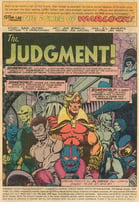
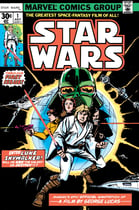






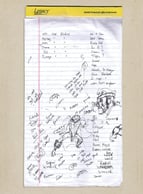

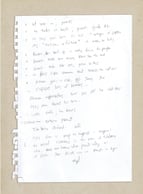
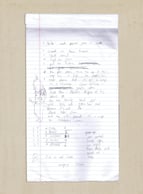




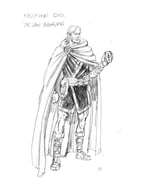
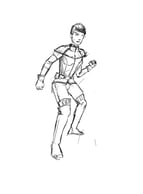
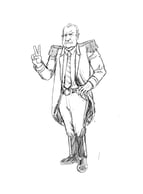
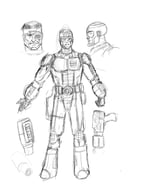




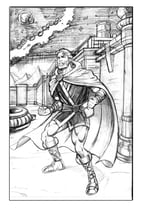
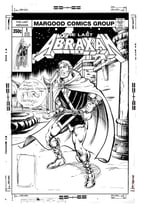
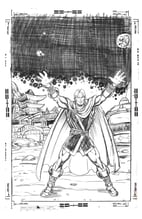
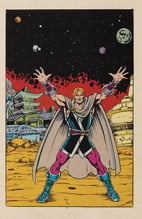




Previous: Ideas & Inspirations
Next: Layouts
